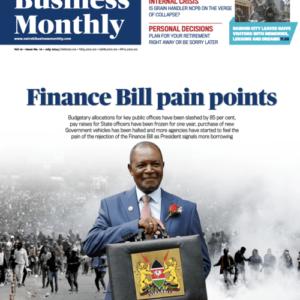BY DR EDWIN WANJAWA
The 2020 KCSE exam is out. Of the 747,161 candidates who sat the exam, 143,140 scored C+ and above and are guaranteed a place in our public and private universities. That only less than 2% of the candidates made the cut, should be an indictment of our education system. However, the education system stands accused in more ways than one.
Graduate unemployment in Kenya is probably at its all-time high and has left Kenyan university graduates scrambling for whatever jobs they can get their hands on. Despite this year’s Covid-19 unemployment trends, university graduates settling for any job is not new. Graduates today often do not work in a job requiring a degree, or do not work in a job that is in their field. This is strange, considering the obscene amount of time and money that students spend getting their degrees.
Download Nairobi Business Monthly Latest Edition
The bulk of the blame is being put on the students themselves, with millennials and Gen Z being dubbed as lazy, when in actuality, the issue is a far deeper problem with Kenya’s education system and how it does not work to properly educate students.
The root of the problem rests in our high schools. The lack of hands-on learning, effective teaching methods based on psychological research and a narrow-minded education is setting students up for failure in the universities and in the job market. When a student pays hundreds of thousands of shillings to spend four to 10 years in full-time classes, university really can’t be seen as anything else but an investment into your career. But when high school students enter university with little to no idea about what they want to do with their lives, they are wasting both time and money on an education that may not be aiding them in their future career.
An estimated 20% to 50% of students enter university unaware what they want to study, and 75% of students engage in all sorts of inter university, inter faculty and departmental transfers hoping to change their degree courses. If college preparation methods in high school changed, it would help students to decide on what they want to study before even entering university, saving students time and money. Many of these students pick a major that may not be best suited to them, leading to 41% of university graduates working in jobs that do not require a degree, and only 27% of university graduates working in a field related to their training.
We need high schools to change their curriculums to help prepare students for college and make well-informed decisions about their future. First and foremost, high school curriculums and offered classes need to be flexible and diverse, ranging far beyond and within the core subjects of math, science, history and English. A well rounded and content rich education is a great way to allow for students to accomplish their soul searching and career discovery in high school, so that it doesn’t have to occur in a much more expensive university environment.
Vocational classes, also known as shop classes, have long disappeared from schools and desperately need to be reincorporated back into curriculums. These classes let students discover paths that may not lead to university, but that may lead to technical and vocational school instead. Life skills, such as money management, curriculum vitae building and business management should also have a higher prevalence in high schools, not only because they teach problem-solving and critical thinking skills that are often underrepresented in typical core classes, but also because they expose students to new career possibilities and teach them skills they will need to get a job in the future.
Hands-on experiences like these are important in every subject. Students getting their heads outside of the classroom and into the workplace to see the real-life applications of what they are learning in school is not only a great way to increase learning and retention of knowledge, but also exposes students to possible careers, passions, interests and hobbies. Students should have the opportunities to see how a hospital works, to be able to see how cases play out in the courtroom, how groundbreaking scientific research takes place and how an artist creates works of art in their studio. Hands-on education will help students go less blindly into their university admissions or TVET processes with a much clearer picture of their major and careers in the future.
A switch to a hands-on learning environment must be accompanied by a change in teaching methods. Often, multiple teaching methods and styles are not included into curricula, and teachers are not given the resources to do so. Teaching methods as a whole need to change to be focused on building relationships between students and teachers, on student-centered learning and on increasing student autonomy. This will improve critical thinking and decision-making skills that are necessary when entering the workforce. This way, university education doesn’t go to waste, and students can end up working in a field they love.
Writer Wanjawa teaches at Pwani University



